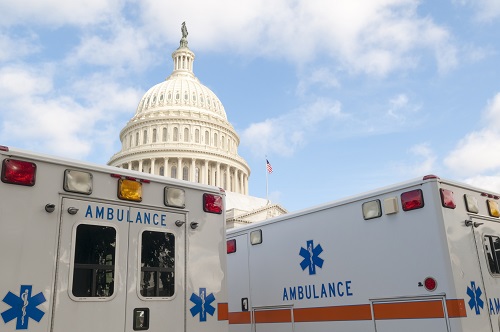Traditional Medicaid was available to four groups with very low or no income and little to no net worth. These groups were 1) Aged 2) Disabled 3) Adults (mostly with a qualifying dependent) and 4) Children.
The Medicaid for first two groups, “Aged” and “Disabled,” mostly picks up where Medicare falls short for the poorest people. May only be Medicare premiums for some beneficiaries. For others it’s long-term care in a nursing home. The 2010 US average Medicaid cost for Aged beneficiaries was $12,958 and Disabled $16,240. The highest costs were generally incurred by northeast and upper mid-west states (and Alaska). As higher cost of living states, the northeast would be expected to spend more than average. Perhaps they and the upper mid-west states also treat their poor elderly and disabled better.
New York: $21,931 – Aged; $30,288 – Disabled
Minnesota: $16,591 – Aged; $25,943 – Disabled
California: $9,844 – Aged; $15,891 – Disabled
The available summary data don’t permit much more than the observation that per capita Medicaid costs for the elderly and disabled vary widely among the states. By design as a federal and state cost sharing program, it allowed states the flexibility to manage certain components including the option to provide higher levels of care. And while the per capita Medicaid costs for the elderly and disabled are high, the beneficiary numbers are low, another impediment to any cross state analysis from summary data.
What should be of more interest to the public is how well states have been managing Medicaid for adults as that will be the largest group that will increase with the ACA Medicaid expansion. On this metric, New York isn’t at the top of the heap; although it still does exceed the average of $3,025 by $1,460.
Keep in mind that a major rationale for both “Romneycare” and the ACA is that expanding the pool of those with health insurance will reduce the per capita cost per insured. By 2010, Massachusetts had expanded Medicaid for adults (not all the way under the ACA expanded Medicaid guidelines but close). Reducing the amount of health care provided and not paid for.
So how was MA doing on the narrow measure of adult Medicaid? Much better than NY with a per capita cost of $3,145. However, the per capita spending for children was $500 more! Plus it’s Federal DSH Allotments haven’t changed from that of other states. (And why is NY getting 50%+ more than CA and TX in DSH allotments? Total dollars not per capita dollars.)
What does pop out is that there appears to be a correlation between a state’s usage of insurance company managed care for Medicaid beneficiaries. More managed care = higher per capita costs. (Someone with better computing power than I have could do a good statistical analysis.)
Consider NM – 76% managed care
Adult – $5,565
Child – $4,551
Then there’s KY with only 18.1% in managed care
Adult – $4,742
Child – $3,016
CA and TX are similar in their usage of managed care for Medicaid 27.1% and 27.8% respectively. The similarity ends there.
TX:
Adult – $3,263
Child – $3,016
California is either doing more things right than any other state in managing its public health care dollars for its poorest citizens or it’s the cruelest state of all.
CA:
Adult – $1,136
Child – $1,585
Sources:
KFF/Medicaid/State-indicator/spending on acute care
KFF/Medicaid/State-indicator/payments per enrollee
The NY Times explains the DSH that I noted above.
The subsidy [DSH], which for years has helped defray the cost of uncompensated and undercompensated care, was cut [under PPACA] substantially on the assumption that the hospitals would replace much of the lost income with payments for patients newly covered by Medicaid or private insurance.
There are a few problems with this assumption. As was since back in the 1990s when Medicaid beneficiaries were allowed to choose their hospital, fewer chose the public facility. It’s one reason why LA County-USC Medical Center has been struggling financially. Another issue is that running repayments through Medicaid instead of providing direct provider subsidy will cost more.
Nonetheless, the change has been made. DSH payments will be reduced. Here is the KFF DSH table by state for FY2008-2011. Total in 2011 was $11 billion. Nationwide.
But now the hospitals in states like Georgia will get neither the new Medicaid patients nor most of the old subsidies, which many say are crucial to the mission of care for the poor.
Might cause a few states like Maine to reconsider and act quickly on the Medicaid expansion. Others — just one more chance to kick the poor.





